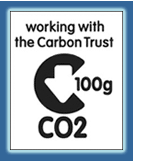Does Carbon Labelling Reduce Carbon Emissions?
 Labeling products with information about how much greenhouse gas was emitted in the product's production, processing and distribution is at a very early stage of development. It is a huge commitment of resources to develop an accurate analysis for even one product.
Labeling products with information about how much greenhouse gas was emitted in the product's production, processing and distribution is at a very early stage of development. It is a huge commitment of resources to develop an accurate analysis for even one product.Consumers do not seem to understand the carbon labels that have been piloted. They may be more misleading than helpful, even assuming they can be made accurate.
For example, Boots the Chemists developed a carbon footprint analysis for one of its brands of shampoo indicating that 160 grams of greenhouse gases were released in its manufacture (including the manufacture of its ingredients and packaging) and distribution. However, the consumer is going to take it home and cause the emission of kilograms of CO2 every time he or she uses the product. The carbon cost of heating water for the shower dwarfs the carbon cost of the blob of shampoo used (actually, of its packaging--that's the carbon-intensive part). Even if you rinse and repeat.
Carbon labeling may make the consumer feel better, just like labeling your product as made from hemp and/or bamboo, which the consumer somehow feels are environmentally friendly materials. It is more a part of image management than of carbon management.
Better to look at your operations and improve energy and materials efficiency.
Keep in mind this possibility: After you go to all the trouble and expense of measuring carbon costs and labelling your products, will your carbon labels compare favorably with those of your competitors? There are some strategic questions here about how green you can get compared to competitors, and whether it makes sense to compete on that basis when consumers can see actual numbers.
If consumers do learn to look for carbon labels, will they become a marketing advantage? This will favor large companies, since it may cost tens of millions to develop, calculate, and apply such labels to a range of products. In the long run such labels may become as common as nutrition labels are today--indeed much more common since they could be applied to all products. They might even come to be required, as nutrition labels are. However, that is decades in the future.
That said, the type of life-cycle analysis of products undertaken to develop carbon labels could be very useful to a company as it identifies high-leverage points for carbon reduction. In the case of Boots' shampoo mentioned above, the analysis suggested incorporating recycled PET into the bottles, and adopting reusable plastic bins rather than cardboard cartons for bulk distribution to stores, and other distribution improvements. These changes reduced the life-cycle (not counting consumer use) carbon emissions of the shampoo by 20%.
Reducing greenhouse gas emissions by 20% is a substantial win, if it can be replicated at reasonable cost. But the label itself is not necessary to achieve this.
For more information about the carbon labelling issue check these links:
Carbon Trust launches Carbon Reduction Label
Tesco to 'carbon label' its products
Tesco briefing paper (pdf) by UK Energy Research Centre
CarbonCounted's alternative system
tags: greenhouse gas emissions, green, carbon choices, carbon footprint, business, carbon label
No comments:
Post a Comment